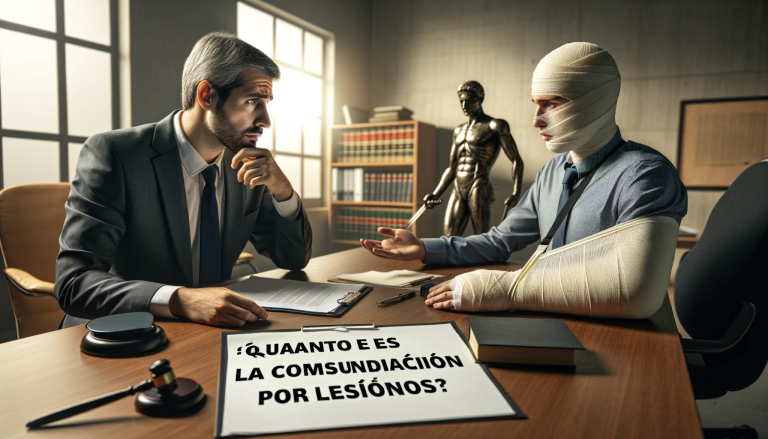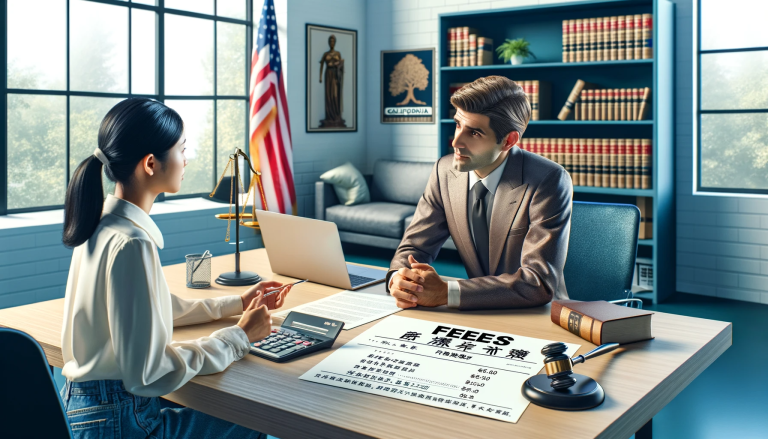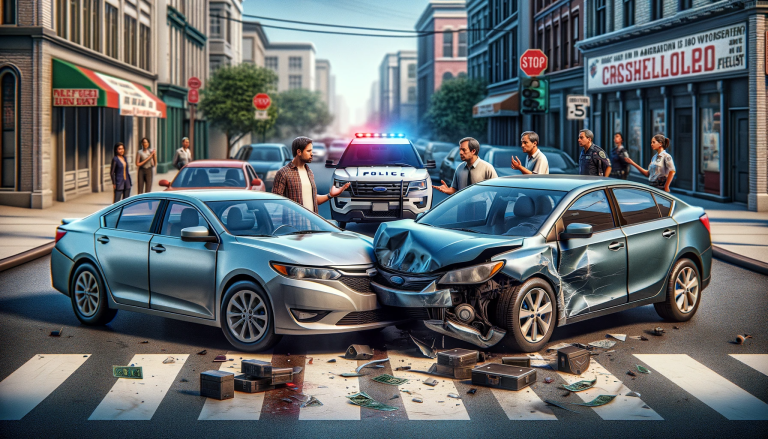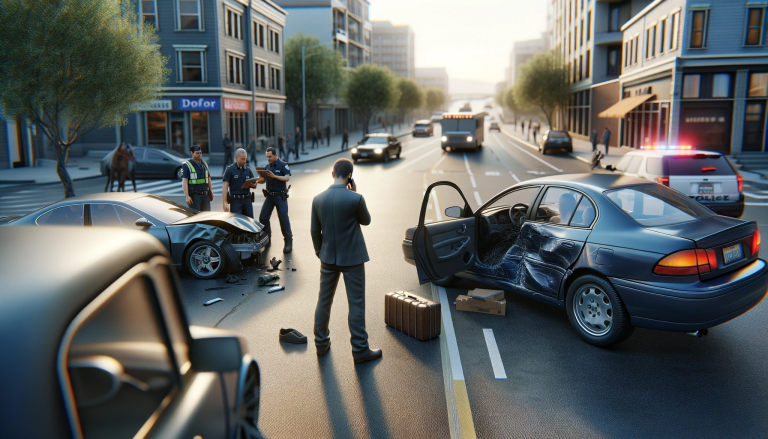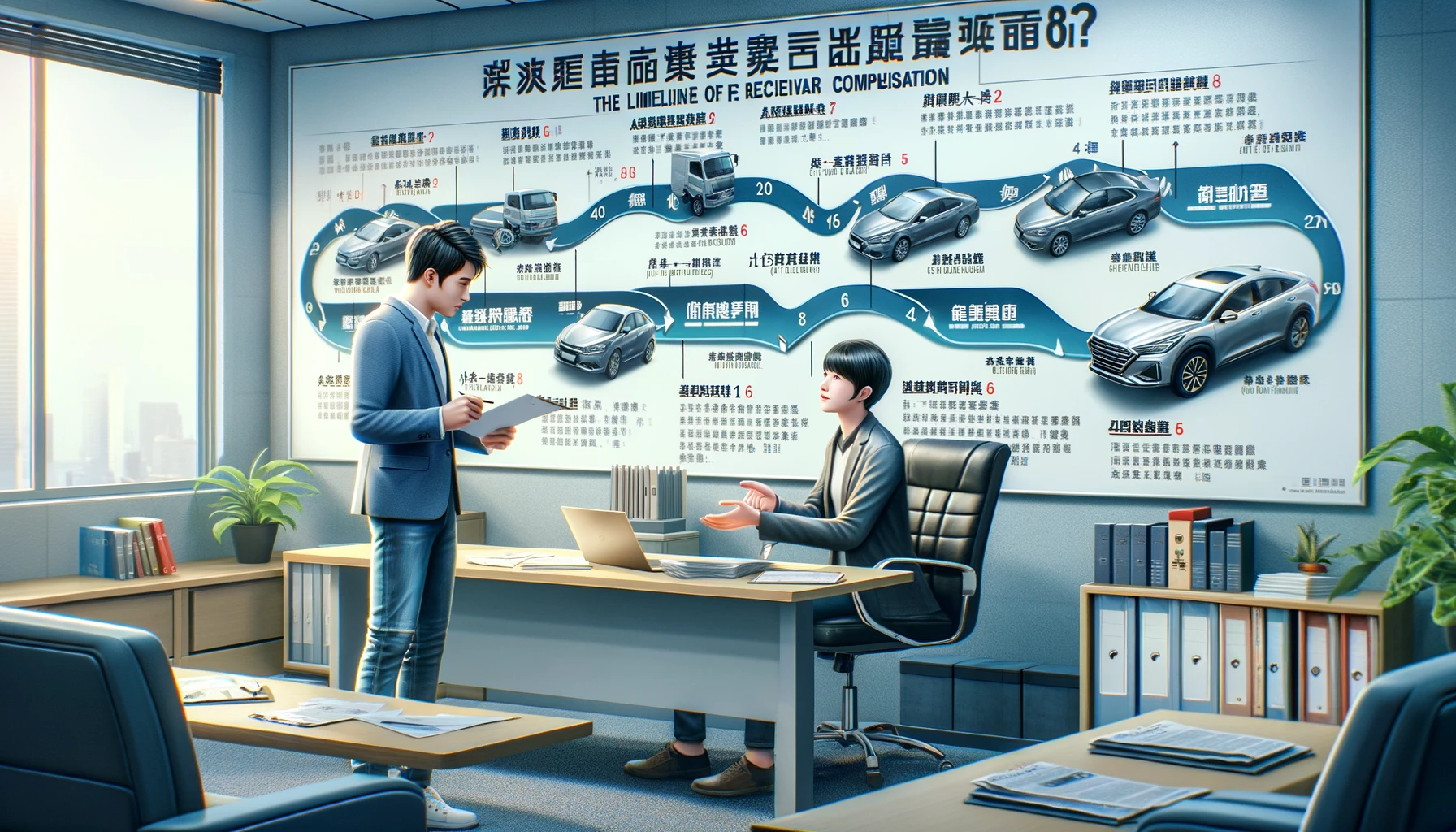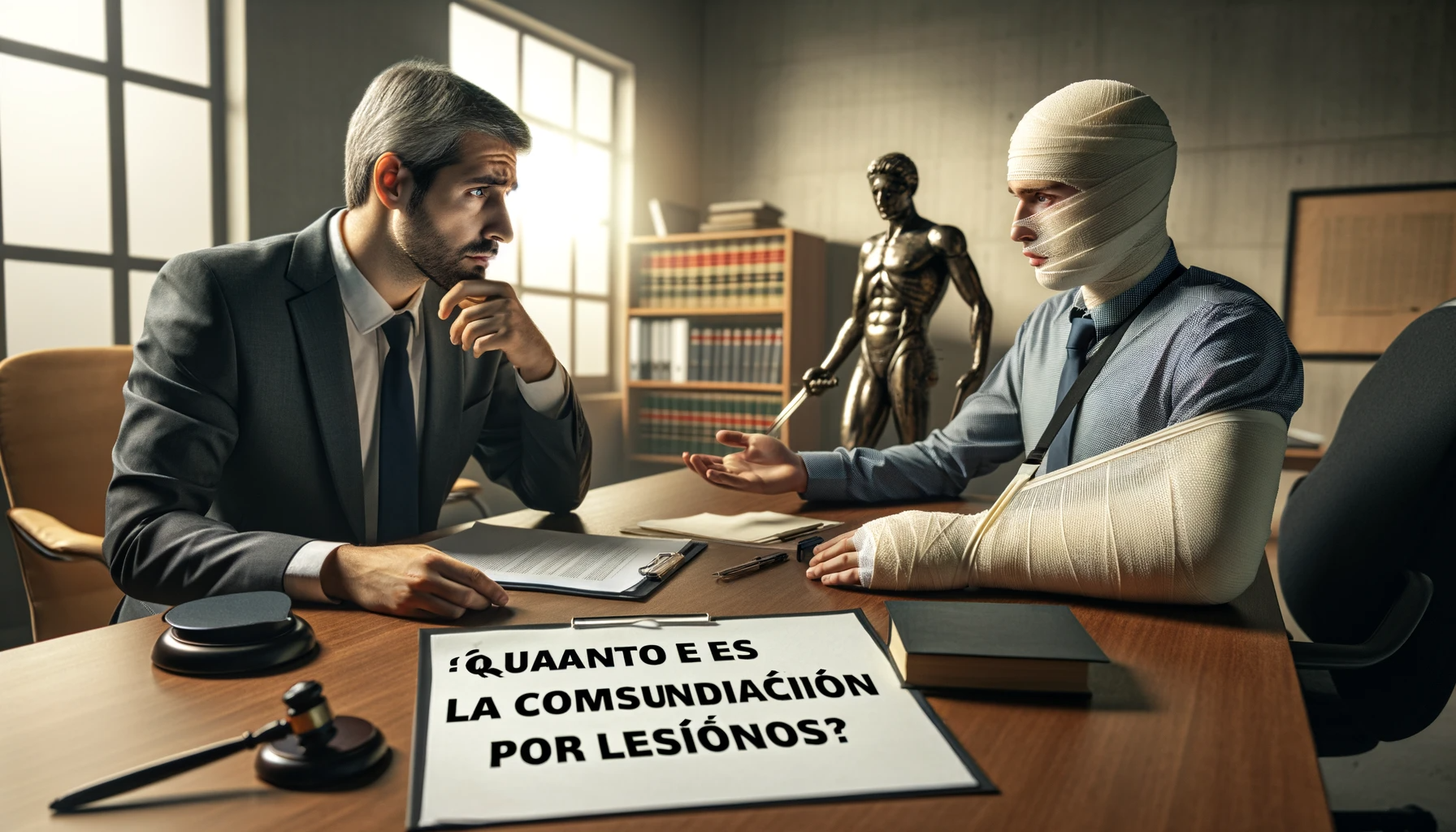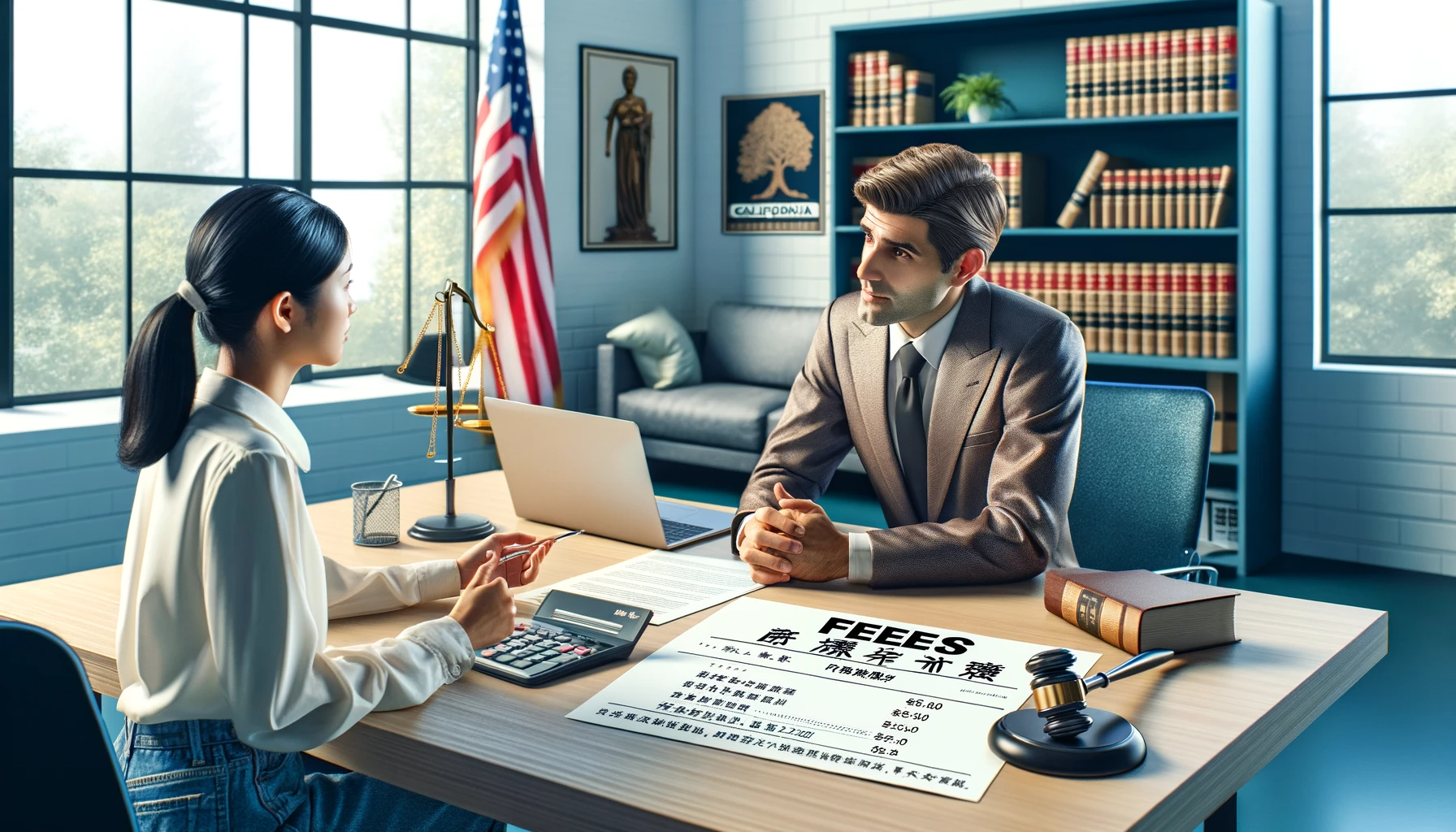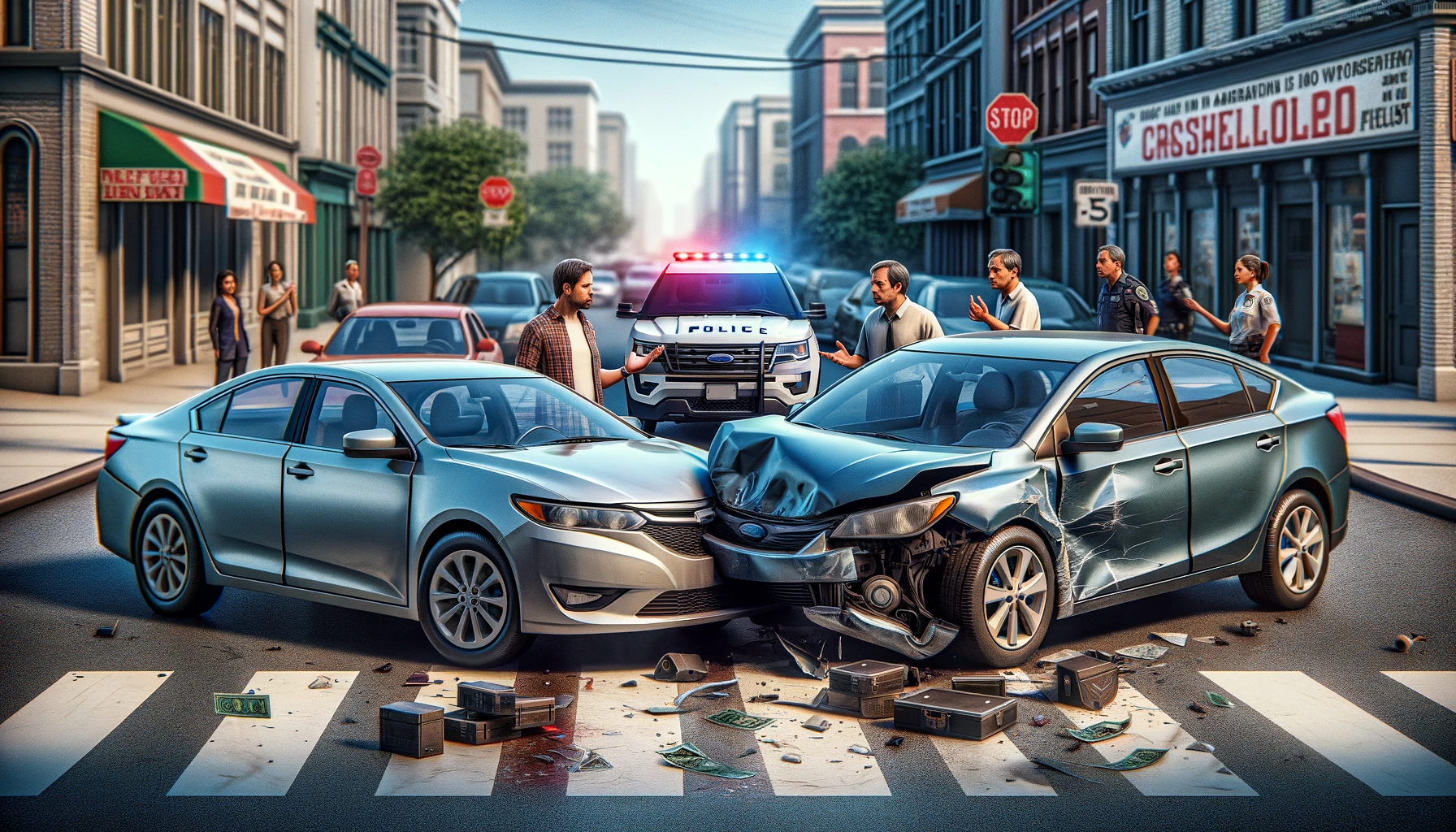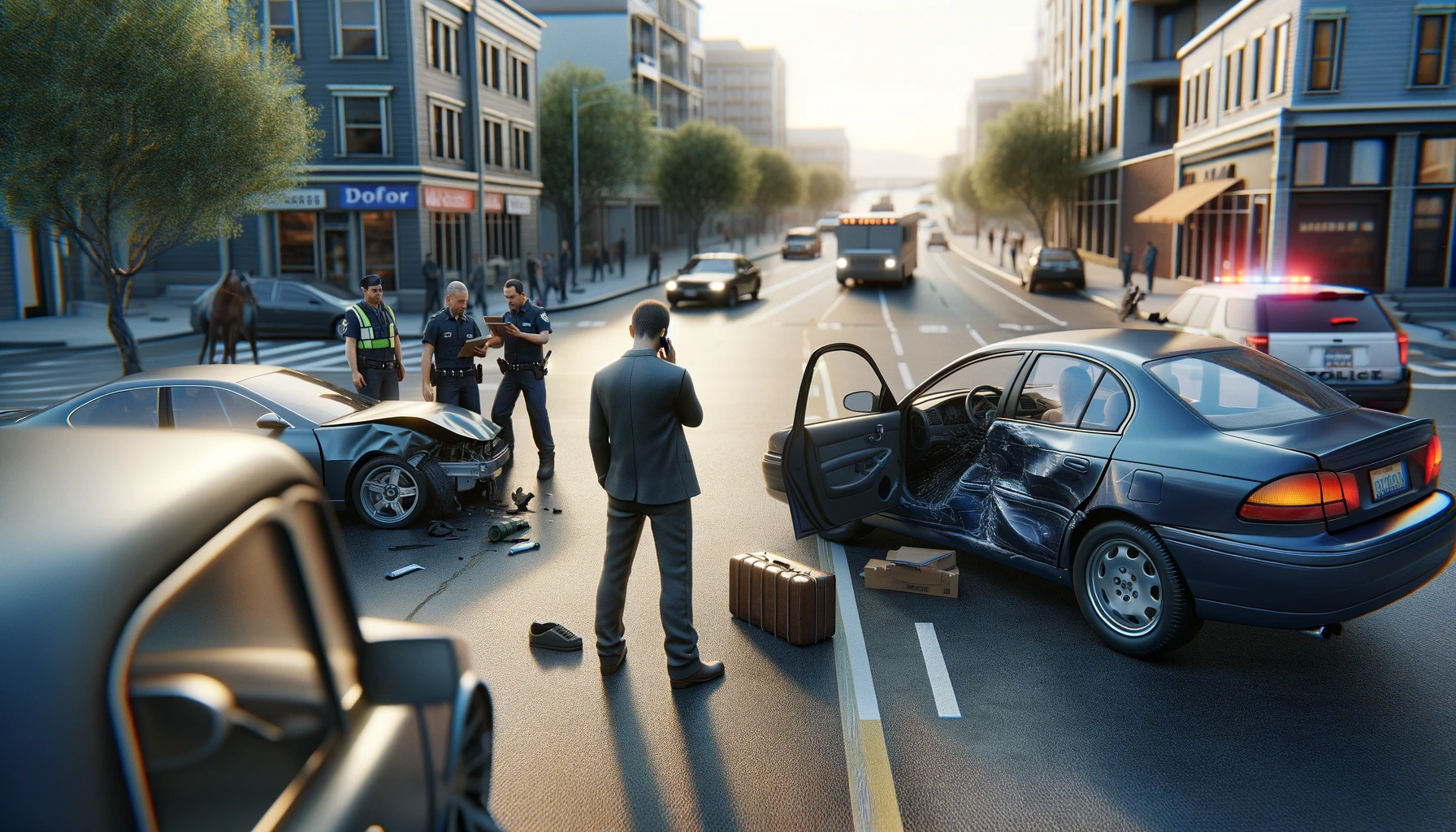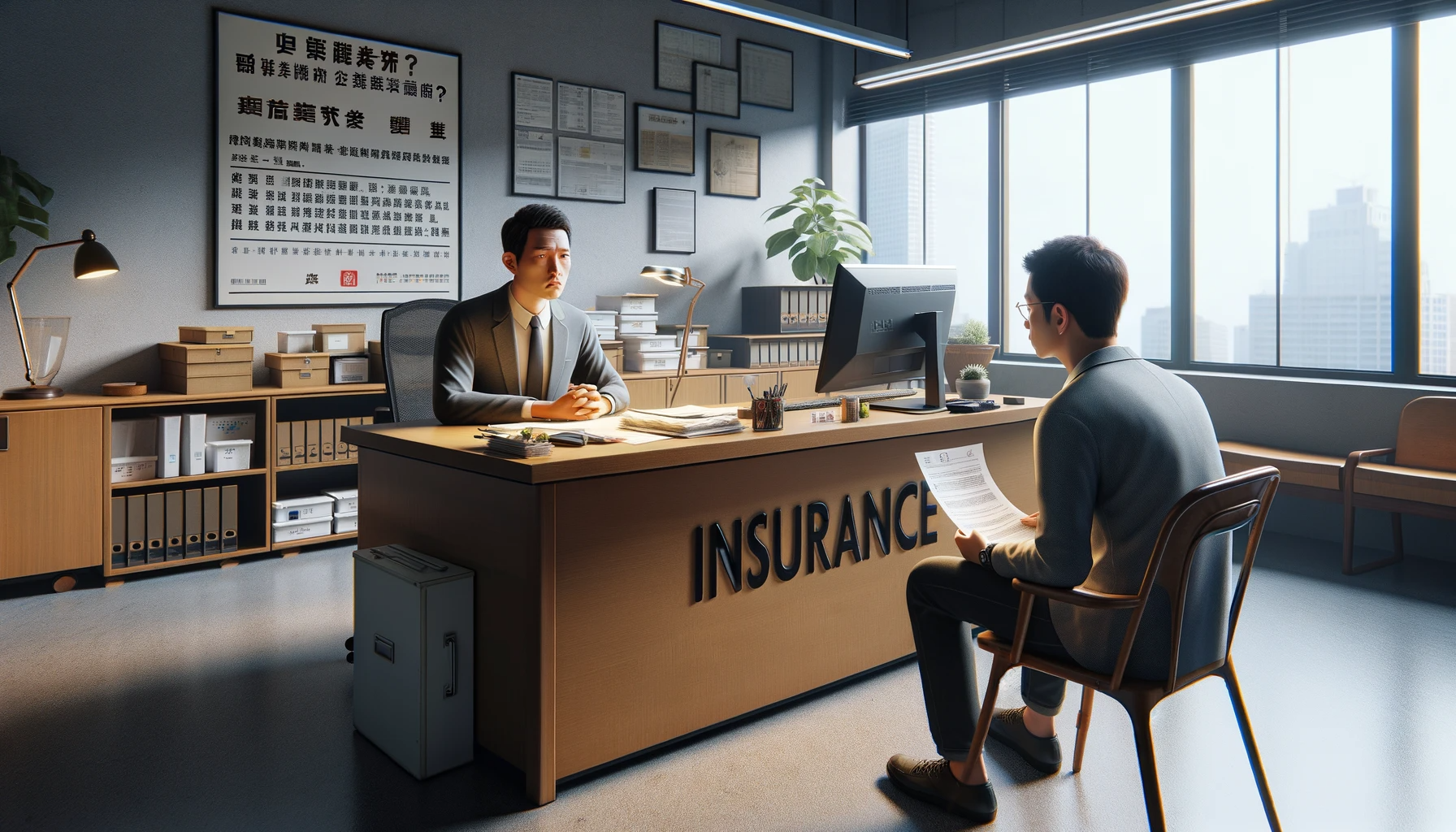Introduction
Frontal
car accidents, also known as head-on collisions, are among the most dangerous types of car crashes, often resulting in severe
injuries and significant financial burdens. Victims of these accidents can find themselves overwhelmed by medical bills, vehicle repair costs, and the potential loss of income due to long recovery periods. Understanding your legal rights and the available resources is crucial for securing compensation and justice. This comprehensive guide will take you through everything you need to know about frontal
car accidents, including their causes, common
injuries, and the legal options that can help you get back on your feet.
Definition and Common Causes
A frontal
car accident occurs when the front ends of two vehicles collide head-on. These accidents typically happen when one or both drivers lose control of their vehicle, often drifting into the opposite lane. Due to the high speeds involved, head-on collisions are particularly dangerous and frequently lead to life-threatening
injuries. Understanding the common causes of these accidents can help prevent them and highlight instances of negligence in legal proceedings.
- Distracted Driving
Distracted driving is one of the primary causes of frontal car accidents. Activities such as texting, eating, or adjusting the car’s controls divert the driver’s attention away from the road. Taking your eyes off the road, even for a second, can cause a devastating head-on collision. Many drivers underestimate the risks of seemingly harmless distractions until it’s too late.
- Reckless or Speeding Drivers
Speeding and reckless driving are significant contributors to frontal crashes. When drivers exceed speed limits or engage in risky maneuvers, they may lose control of their vehicle, resulting in a dangerous situation where a head-on collision becomes almost unavoidable. High-speed collisions tend to cause more severe injuries due to the greater force of impact.
- Drunk or Impaired Driving
Driving under the influence of alcohol or drugs impairs reaction times and decision-making abilities. Intoxicated drivers are more likely to drift out of their lane or misjudge distances, making them a common cause of head-on collisions. The impaired state also makes it difficult for them to react quickly enough to avoid a crash.
- Drowsy Driving
Fatigue can impair a driver’s ability to stay focused, leading to unintentional lane departures and slower response times. Drowsy drivers may fall asleep at the wheel, crossing over into oncoming traffic and causing a head-on collision.
- Poor Weather Conditions
Weather conditions such as rain, snow, fog, or ice can reduce visibility and traction, making it difficult to control a vehicle. Drivers who do not adjust their speed and driving habits to account for these conditions are at a higher risk of causing frontal accidents.
- Wrong-Way Driving
Wrong-way driving typically occurs when a driver enters a one-way street or highway exit ramp going in the wrong direction. These accidents are particularly dangerous on highways, where vehicles are traveling at high speeds.
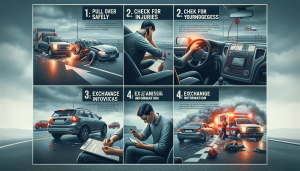
Frontal car accidents can result in severe
injuries due to the sudden deceleration and force of impact. The driver and passengers in both vehicles are at risk, especially if they are not wearing seat belts or if the airbags fail to deploy correctly. Below are some of the most common
injuries sustained in head-on collisions:
- Head and Brain Injuries
Head and brain injuries are common in head-on collisions due to the violent impact. Victims may suffer from concussions, skull fractures, or traumatic brain injuries (TBIs), which can lead to long-term cognitive impairments or even death. These injuries often require immediate medical attention and extensive rehabilitation.
- Neck and Spinal Cord Injuries
The sudden jolt of a frontal collision can cause whiplash, spinal fractures, or herniated discs. In severe cases, the impact may damage the spinal cord, leading to partial or complete paralysis.
- Chest and Internal Injuries
The chest area is particularly vulnerable in head-on collisions. The impact can cause broken ribs, which may puncture internal organs like the lungs, liver, or spleen. Internal bleeding is a serious concern and may not be immediately apparent after the crash.
- Leg and Knee Injuries
Frontal car accidents often trap the legs of drivers and passengers, causing fractures, dislocations, or severe cuts. In some cases, amputation may be necessary if the damage is extensive.
- Psychological Trauma
Beyond physical injuries, victims of frontal car accidents may experience long-term psychological trauma. Conditions such as post-traumatic stress disorder (PTSD), anxiety, and depression are not uncommon after a severe crash.
Immediate Steps After a Frontal Car Accident
Ensuring Safety and Contacting Authorities
The moments following a frontal car accident are critical for ensuring your safety and preserving evidence. Here are the steps to take:
- Check for Injuries: First, check yourself and others involved in the accident for injuries. If anyone is hurt, call emergency services immediately.
- Move to a Safe Location: If the vehicles are drivable, move them to the side of the road to prevent further accidents. If not, turn on hazard lights to alert other drivers.
- Call the Police: Even if the accident seems minor, it’s crucial to have police documentation. The police report will be invaluable for insurance claims and any legal actions.
- Do Not Admit Fault: Be cautious about your statements to the other driver and the police. Admitting fault, even unintentionally, can affect your ability to recover compensation later.
Collecting Evidence at the Scene
Proper documentation of the accident scene can make or break a legal case. Here’s what to do:
- Take Photos and Videos: Document the damage to all vehicles, road conditions, skid marks, and any visible injuries. The more comprehensive your photos, the stronger your case.
- Talk to Witnesses: Get the contact information of any witnesses and ask them to describe what they saw. Witness testimonies can be crucial in establishing liability.
- Exchange Information: Get the other driver’s name, contact information, license plate number, and insurance details.
The Importance of Legal Representation
Why You Need a Lawyer After a Frontal Car Accident
Navigating the aftermath of a head-on collision can be overwhelming, especially when dealing with insurance companies that aim to minimize payouts. An experienced car accident lawyer can advocate for your rights, ensuring you receive fair compensation for medical bills, lost wages, and pain and suffering. They will also handle complex legal procedures, allowing you to focus on recovery.
How to Choose the Right Car Accident Lawyer
Selecting the right lawyer is crucial for the success of your case. Consider the following when choosing legal representation:
- Specialization: Choose a lawyer who specializes in car accidents and personal injury law.
- Experience: Look for a track record of successful settlements and courtroom experience.
- Reputation: Read reviews and ask for recommendations to gauge the lawyer’s reputation.
- Personal Connection: The lawyer-client relationship is built on trust, so choose someone you feel comfortable with.
Understanding Liability in Frontal Car Accidents
Who is at Fault in a Frontal Collision?
In most cases, the driver who crossed into the wrong lane or was driving recklessly is deemed at fault. However, proving fault can be complicated and requires solid evidence, including:
- Accident Reports: Police reports often contain crucial information about the cause of the accident.
- Witness Testimonies: Eyewitness accounts can help corroborate your version of events.
- Video Footage: Traffic cameras or dash cams may provide irrefutable proof of what happened.
Proving Negligence
To win a legal case, you must prove that the other driver was negligent. Negligence is established by showing that:
- The driver owed you a duty of care.
- The driver breached that duty (e.g., by speeding or driving recklessly).
- The breach directly caused the accident.
- You suffered damages (physical, emotional, or financial) as a result.
Filing a
car accident claim can be a daunting process, especially when dealing with the aftermath of a traumatic frontal collision. Understanding the steps involved and knowing what to expect can help ensure that you navigate the process efficiently and maximize your chances of securing the compensation you deserve.
Steps to Filing a Car Accident Insurance Claim
After the accident, it’s important to file a claim with your insurance company as soon as possible. Timeliness is crucial, as delays may affect the processing of your claim or, in some cases, lead to a denial. Below are the key steps involved in filing your claim:
- Contact Your Insurance Company: Notify your insurance company about the accident as soon as you are able. Many insurance policies require that claims be filed within a certain period following the incident.
- Provide a Detailed Account: Be prepared to give your insurance company a detailed description of the accident, including the time, location, and what happened. Stick to the facts and avoid speculation about fault.
- Submit Documentation: Provide your insurance company with copies of all relevant documents, including the police report, medical records, vehicle repair estimates, and any evidence you gathered at the scene (such as photos of the damage, road conditions, and witness statements).
- Cooperate with the Investigation: Your insurance company may open an investigation to verify the details of the accident and determine liability. Cooperate fully by providing any additional information they request and answering their questions promptly.
- Negotiate a Settlement: Once the investigation is complete, your insurance company may offer a settlement based on the policy coverage. It’s important to review this offer carefully, as it may not always cover the full extent of your damages.
What Happens if Your Claim is Denied?
If your insurance claim is denied, it can be a frustrating and stressful experience. However, it’s important not to panic, as you still have options:
- Review the Denial Letter: Insurance companies are required to provide a written explanation of why they denied your claim. Review this letter carefully to understand the reasons for the denial and whether any additional information could support your case.
- Appeal the Decision: Most insurance companies have an appeal process in place. You may need to provide additional evidence or clarify certain details to challenge the denial.
- Seek Legal Assistance: If your appeal is unsuccessful or you believe the insurer is acting in bad faith, consult a car accident lawyer. They can help you take legal action against the insurer to recover the compensation you are entitled to under your policy.
Compensation for Frontal Car Accident Victims
As a victim of a frontal car accident, you may be entitled to various forms of compensation, depending on the severity of your
injuries, the circumstances of the accident, and the applicable insurance policies. Compensation is designed to cover both the economic and non-economic losses you may suffer.
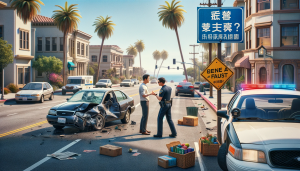
Types of Compensation Available
- Medical Bills and Rehabilitation
One of the largest expenses after a frontal car accident is medical care. Victims often require emergency treatment, surgery, and ongoing rehabilitation. You can seek compensation for these medical expenses, including:
- Hospital stays
- Surgery and treatment costs
- Physical therapy and rehabilitation
- Prescription medications
- Medical devices, such as wheelchairs or braces
- Future medical care if the injuries are long-term
- Lost Wages and Future Earnings
Frontal car accidents often result in injuries that prevent victims from returning to work immediately, or in some cases, ever. If you are unable to work due to your injuries, you can claim compensation for:
- Lost wages during your recovery
- Loss of future earnings if you are unable to return to your previous job or if your earning capacity is diminished due to permanent disability
The compensation should account for both short-term income loss and long-term financial impact.
- Pain and Suffering
In addition to economic losses, victims of frontal car accidents may be compensated for the emotional distress and physical pain they experience as a result of the crash. This type of compensation is known as “pain and suffering” and may include compensation for anxiety, depression, trauma, or a diminished quality of life.
- Property Damage
Frontal collisions typically result in significant damage to the vehicles involved. Compensation for property damage will cover the cost of repairing or replacing your vehicle, as well as any personal items that were damaged in the accident.
Navigating the Legal Process After a Frontal Car Accident
Navigating the legal process after a frontal car accident can be challenging, especially if you are dealing with insurance companies that are hesitant to offer fair compensation. While many claims are settled outside of court, in some cases, litigation may be necessary.
Filing a Lawsuit if Necessary
If you are unable to reach a fair settlement with the insurance company, filing a lawsuit may be your best option. Here’s what to expect:
- Consult with a Lawyer: Before filing a lawsuit, it’s important to consult with an experienced car accident lawyer. They will evaluate your case, gather evidence, and advise you on the best course of action.
- Pretrial Negotiations: Even after filing a lawsuit, there may still be opportunities to negotiate a settlement. In many cases, insurance companies are more likely to offer a fair settlement when faced with the possibility of going to trial.
- Trial Process: If negotiations fail, the case may proceed to trial, where a judge or jury will decide the outcome. Your lawyer will present evidence and arguments on your behalf to secure the compensation you deserve.
Statute of Limitations
One crucial factor to keep in mind when filing a lawsuit is the statute of limitations. This is the legal deadline for bringing a claim, and it varies from state to state. In most cases, the clock starts ticking on the day of the accident. Failing to file a lawsuit within the statute of limitations could result in losing your right to seek compensation.
Resources for Frontal Car Accident Victims
Recovering from a frontal car accident involves more than just physical healing. There are numerous resources available to help victims navigate the legal, financial, and emotional aspects of recovery.
Legal Aid Services
If you are unable to afford a lawyer, there are free or low-cost legal aid services that can assist you with your case. These organizations specialize in helping accident victims file claims, negotiate with insurance companies, and pursue legal action when necessary. Some legal aid services also provide resources for individuals with limited English proficiency or those unfamiliar with the legal system.
Support Groups and Emotional Resources
Car accidents can be emotionally traumatic experiences, and many victims find themselves struggling with anxiety, depression, or PTSD after the event. Support groups, counseling services, and mental health professionals can provide valuable assistance in coping with these challenges. Seeking emotional support is an important part of the recovery process and can help you regain control over your life after the accident.
While not all accidents are avoidable, there are steps you can take to reduce the likelihood of being involved in a frontal collision. By adopting safe driving habits and using technology to assist in your driving, you can significantly decrease your risk.
Safe Driving Tips to Avoid Collisions
- Stay Focused on the Road: Distracted driving is a leading cause of accidents. Avoid using your phone, eating, or engaging in any activities that take your attention away from the road.
- Obey Traffic Laws: Always follow posted speed limits, obey traffic signals, and avoid aggressive driving behaviors like tailgating or weaving in and out of lanes.
- Avoid Driving Under the Influence: Never drive while impaired by alcohol or drugs. If you are tired or drowsy, consider finding an alternative way home or resting before getting behind the wheel.
- Maintain a Safe Distance: Keeping a safe distance from the vehicle in front of you gives you more time to react to sudden stops or obstacles.
Using Technology to Stay Safe
Modern vehicles are equipped with advanced safety features that can help prevent frontal accidents. Here are some technologies that may help keep you safe:
- Lane Departure Warning Systems: These systems alert you if you begin to drift out of your lane, helping to prevent head-on collisions caused by lane departure.
- Automatic Emergency Braking: This feature automatically applies the brakes if it detects an imminent collision, potentially reducing the severity of the impact or avoiding the accident altogether.
- Adaptive Cruise Control: Adaptive cruise control adjusts your speed to maintain a safe distance from the vehicle in front of you, helping to prevent accidents caused by tailgating or sudden stops.
Conclusion
Frontal
car accidents can have devastating consequences, but understanding your legal rights and the resources available can make the recovery process smoother. From hiring the right lawyer to filing claims and seeking compensation, taking the right steps early on is critical. Stay informed, seek the help you need, and don’t hesitate to fight for your rights.
Look for an attorney who has the right legal resources for your legal needs.
Contact us here on the
Warmuth Law website or through our hotline 888-517-9888.
Frequently Asked Questions (FAQ's)
1. What should I do immediately after a frontal car accident?
Ensure safety, call the authorities, and gather evidence at the scene.
2. Do I need a lawyer for a frontal car accident?
Yes, legal representation can protect your rights and help you get the compensation you deserve.
3. What types of compensation can I receive after a frontal car accident?
You may receive compensation for medical bills, lost wages, and emotional distress.
4. How do I prove the other driver was at fault in a frontal car accident?
Collect evidence, such as witness testimonies, accident reports, and photos, to prove negligence.
5. What is the statute of limitations for filing a lawsuit after a frontal car accident?
The deadline varies by state, so it's crucial to check your local laws.




